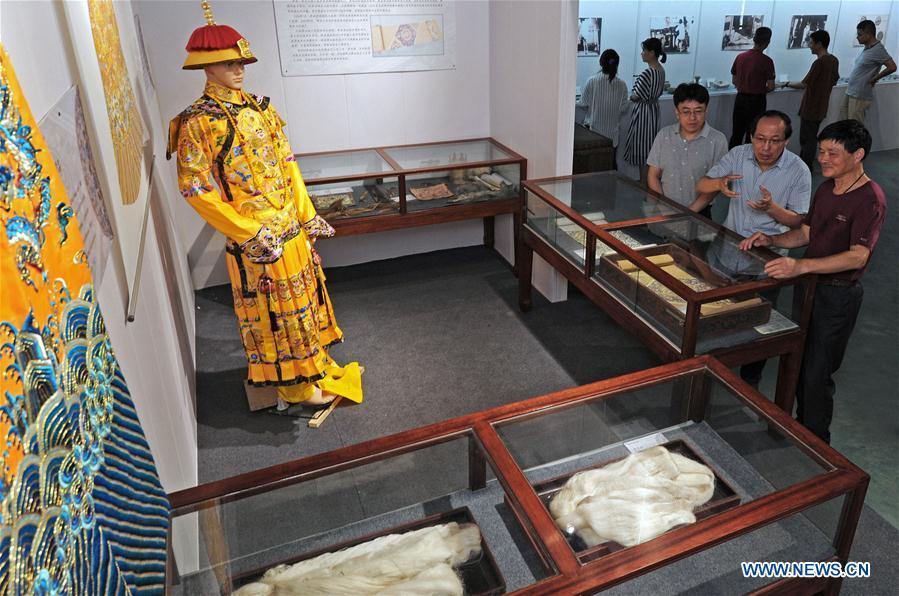
Wang Yishi (1st R) listens to the notice for keeping silk products at his Jili silk museum in Huzhou City, east China's Zhejiang Province, June 11, 2020. Jili silk, produced in Jili Village of Huzhou, is famous for its high quality. It was designated as the material to make ropes for Chinese emperors since the middle of the Ming Dynasty (1368-1644). In 2011, the making technique of silk was listed as one of the national intangible cultural heritages. It is known worldwide since 1851 when Jili silk won the first gold prize for China during the World Expo. Wang Yishi, 63 years old, a farmer at the Jili Village, has been working on inheriting the making skills of Jili silk for many years. He takes care of his silkworm farm every day and also runs a museum for the craft. The museum was opened to the public for free in July of 2018, with 300 plus silk-related items on display. (Xinhua/Tan Jin)
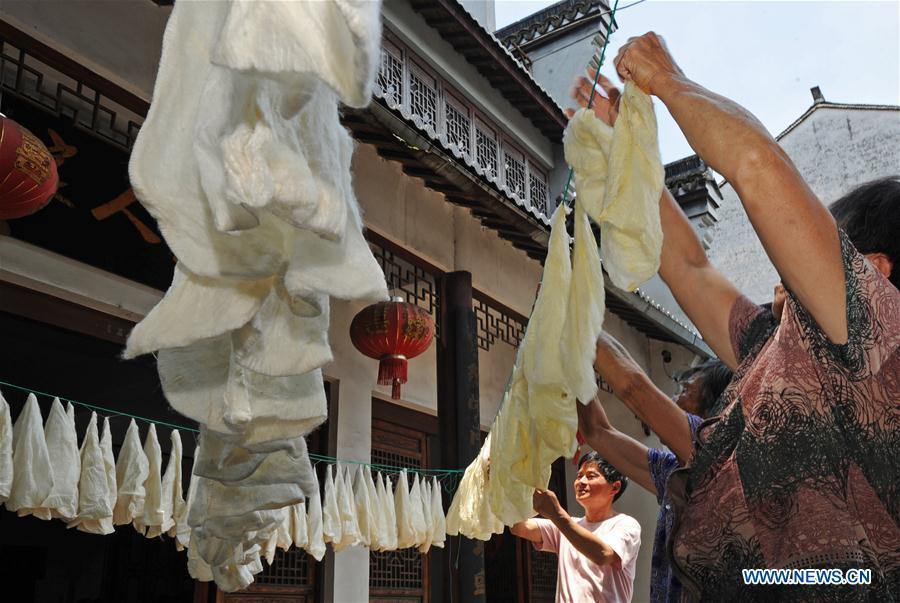
Wang Yishi (1st L) and villagers dry silk materials for making silk quilt at his Jili silk museum in Huzhou City, east China's Zhejiang Province, June 12, 2020. Jili silk, produced in Jili Village of Huzhou, is famous for its high quality. It was designated as the material to make ropes for Chinese emperors since the middle of the Ming Dynasty (1368-1644). In 2011, the making technique of silk was listed as one of the national intangible cultural heritages. It is known worldwide since 1851 when Jili silk won the first gold prize for China during the World Expo. Wang Yishi, 63 years old, a farmer at the Jili Village, has been working on inheriting the making skills of Jili silk for many years. He takes care of his silkworm farm every day and also runs a museum for the craft. The museum was opened to the public for free in July of 2018, with 300 plus silk-related items on display. (Xinhua/Tan Jin)
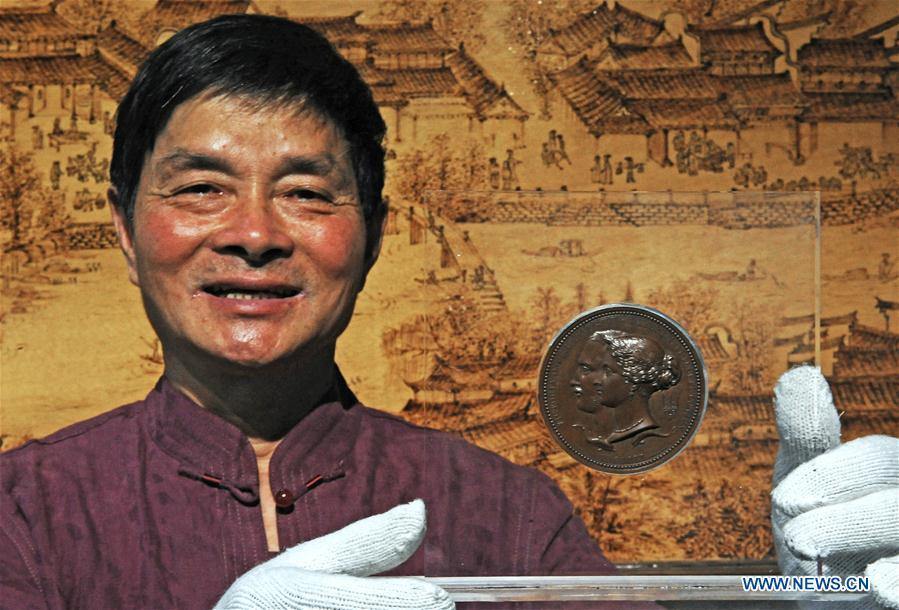
Wang Yishi shows the gold prize won by Jili silk during the World Expo in 1851 at his Jili silk museum in Huzhou City, east China's Zhejiang Province, June 11, 2020. Jili silk, produced in Jili Village of Huzhou, is famous for its high quality. It was designated as the material to make ropes for Chinese emperors since the middle of the Ming Dynasty (1368-1644). In 2011, the making technique of silk was listed as one of the national intangible cultural heritages. It is known worldwide since 1851 when Jili silk won the first gold prize for China during the World Expo. Wang Yishi, 63 years old, a farmer at the Jili Village, has been working on inheriting the making skills of Jili silk for many years. He takes care of his silkworm farm every day and also runs a museum for the craft. The museum was opened to the public for free in July of 2018, with 300 plus silk-related items on display. (Xinhua/Tan Jin)
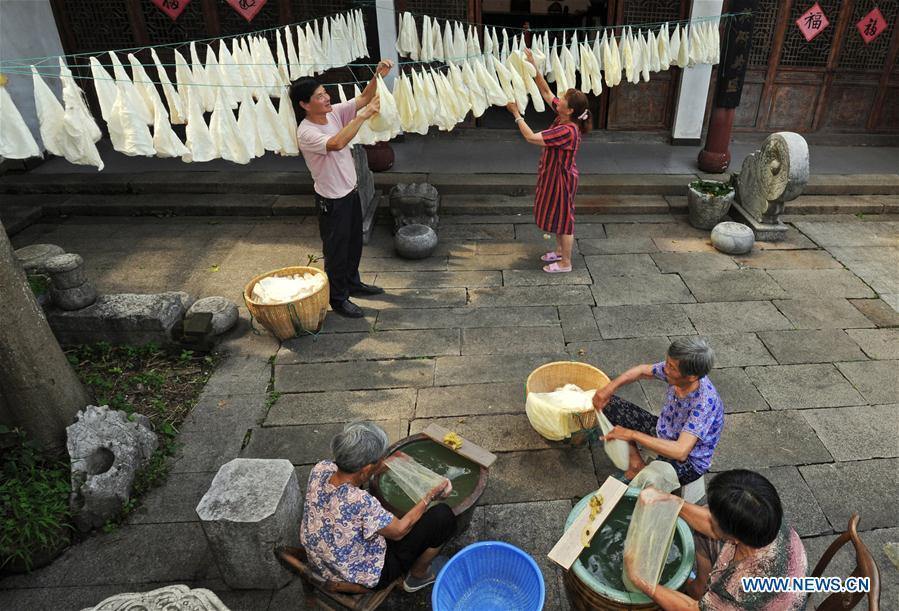
Wang Yishi (L Back) and his wife Ji Jinmei (R Back) dry silk materials for making silk quilt at his Jili silk museum in Huzhou City, east China's Zhejiang Province, June 12, 2020. Jili silk, produced in Jili Village of Huzhou, is famous for its high quality. It was designated as the material to make ropes for Chinese emperors since the middle of the Ming Dynasty (1368-1644). In 2011, the making technique of silk was listed as one of the national intangible cultural heritages. It is known worldwide since 1851 when Jili silk won the first gold prize for China during the World Expo. Wang Yishi, 63 years old, a farmer at the Jili Village, has been working on inheriting the making skills of Jili silk for many years. He takes care of his silkworm farm every day and also runs a museum for the craft. The museum was opened to the public for free in July of 2018, with 300 plus silk-related items on display. (Xinhua/Tan Jin)

Wang Yishi (1st R) and villagers carry harvested silkworm cocoons to be sold in Jili Village of Huzhou City, east China's Zhejiang Province, June 3, 2011. Jili silk, produced in Jili Village of Huzhou, is famous for its high quality. It was designated as the material to make ropes for Chinese emperors since the middle of the Ming Dynasty (1368-1644). In 2011, the making technique of silk was listed as one of the national intangible cultural heritages. It is known worldwide since 1851 when Jili silk won the first gold prize for China during the World Expo. Wang Yishi, 63 years old, a farmer at the Jili Village, has been working on inheriting the making skills of Jili silk for many years. He takes care of his silkworm farm every day and also runs a museum for the craft. The museum was opened to the public for free in July of 2018, with 300 plus silk-related items on display. (Xinhua/Tan Jin)
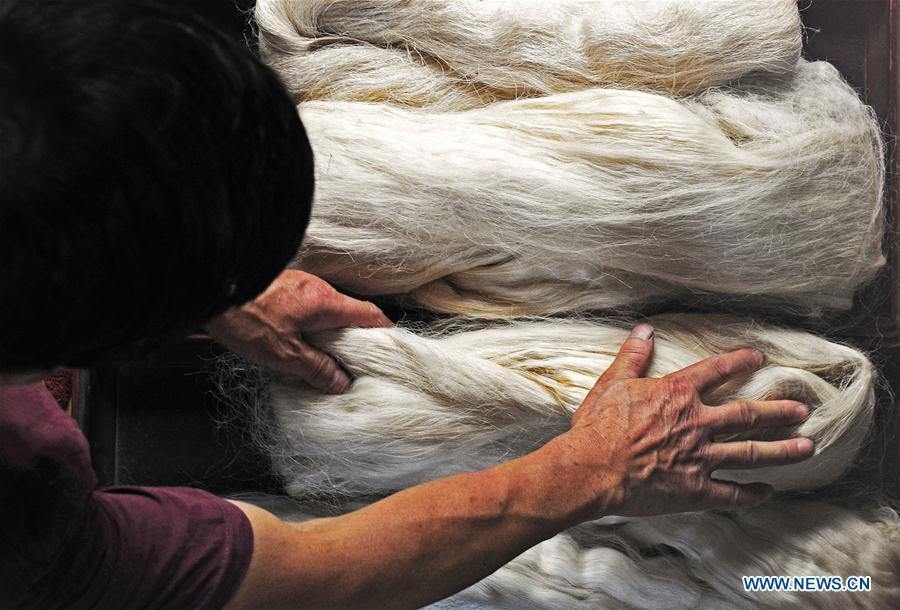
Wang Yishi arranges silk items at his Jili silk museum in Huzhou City, east China's Zhejiang Province, June 11, 2020. Jili silk, produced in Jili Village of Huzhou, is famous for its high quality. It was designated as the material to make ropes for Chinese emperors since the middle of the Ming Dynasty (1368-1644). In 2011, the making technique of silk was listed as one of the national intangible cultural heritages. It is known worldwide since 1851 when Jili silk won the first gold prize for China during the World Expo. Wang Yishi, 63 years old, a farmer at the Jili Village, has been working on inheriting the making skills of Jili silk for many years. He takes care of his silkworm farm every day and also runs a museum for the craft. The museum was opened to the public for free in July of 2018, with 300 plus silk-related items on display. (Xinhua/Tan Jin)
Wang Yishi (1st L) and his wife Ji Jinmei (1st R) introduce to children the technique of making silk at his Jili silk museum in Huzhou City, east China's Zhejiang Province, June 12, 2020. Jili silk, produced in Jili Village of Huzhou, is famous for its high quality. It was designated as the material to make ropes for Chinese emperors since the middle of the Ming Dynasty (1368-1644). In 2011, the making technique of silk was listed as one of the national intangible cultural heritages. It is known worldwide since 1851 when Jili silk won the first gold prize for China during the World Expo. Wang Yishi, 63 years old, a farmer at the Jili Village, has been working on inheriting the making skills of Jili silk for many years. He takes care of his silkworm farm every day and also runs a museum for the craft. The museum was opened to the public for free in July of 2018, with 300 plus silk-related items on display. (Xinhua/Tan Jin)
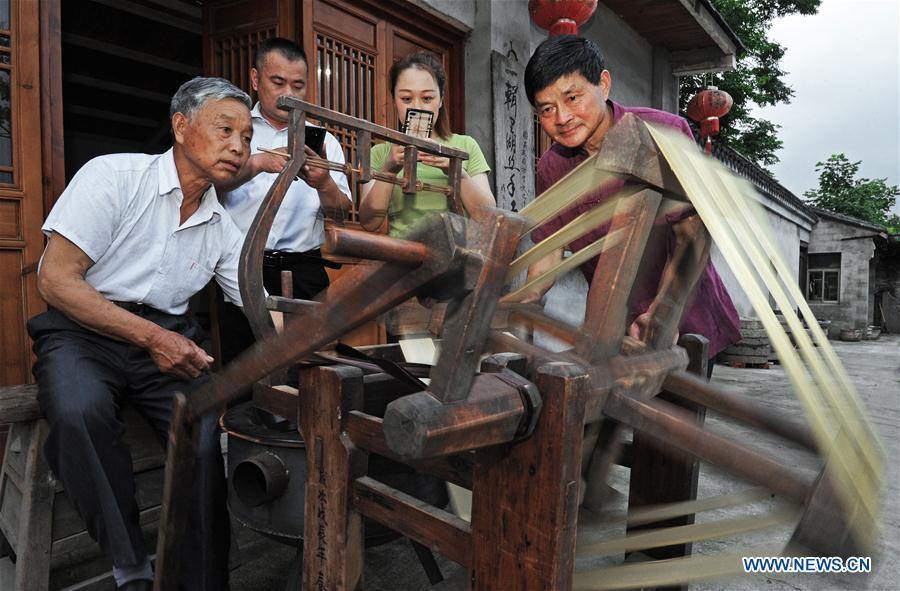
Wang Yishi (1st R) observes the silk-making technique of inheritor Gu Mingqi (1st L) at his Jili silk museum in Huzhou City, east China's Zhejiang Province, June 11, 2020. Jili silk, produced in Jili Village of Huzhou, is famous for its high quality. It was designated as the material to make ropes for Chinese emperors since the middle of the Ming Dynasty (1368-1644). In 2011, the making technique of silk was listed as one of the national intangible cultural heritages. It is known worldwide since 1851 when Jili silk won the first gold prize for China during the World Expo. Wang Yishi, 63 years old, a farmer at the Jili Village, has been working on inheriting the making skills of Jili silk for many years. He takes care of his silkworm farm every day and also runs a museum for the craft. The museum was opened to the public for free in July of 2018, with 300 plus silk-related items on display. (Xinhua/Tan Jin)